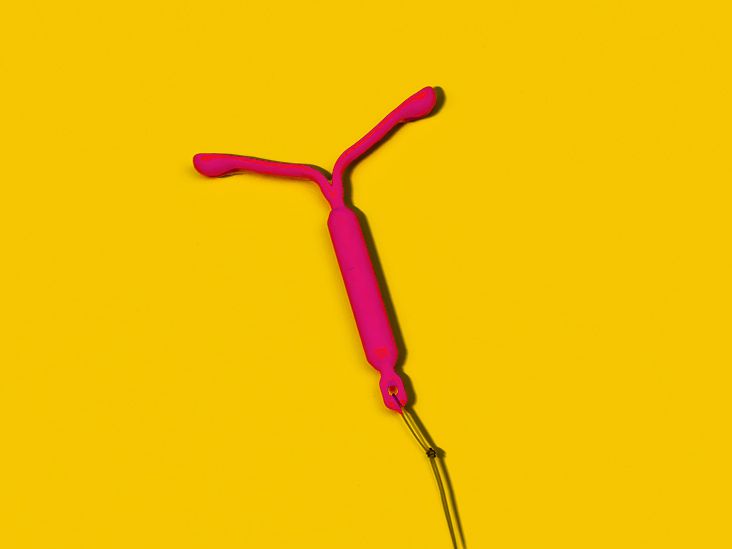Copper IUD Pros and Cons

The copper IUD is a highly effective form of birth control that doesn’t rely on hormones to work its magic. But it’s not right for everyone.
Are you considering birth control without the hormonal hustle? Enter the copper intra-uterine device (IUD), a tiny but mighty warrior of contraception that offers an alternative to peeps looking to avoid synthetic hormones.
This little T-shaped device boasts no-fuss longevity without a drop of hormones, but like anything, it’s not perfect for everyone.
Here’s everything you need to know about the copper IUD’s perks and pitfalls.
A copper IUD is a small, T-shaped device wrapped in copper wire that’s inserted into the uterus to prevent pregnancy. It’s about the size of a quarter and weighs less than a gram. It works by releasing toxic copper ions to sperm, making it 99% effective. Plus, it’s hormone-free.
Insertion is a quick procedure done at your doctor’s office. They’ll insert a speculum to view your cervix and use a special inserter to slide the IUD through the cervix and into your uterus. The whole shebang usually takes just a few minutes. But be warned, it can be painful.
When it comes to choosing between a copper IUD and its hormonal counterparts, the decision hinges on understanding the mechanisms each uses to prevent pregnancy and considering personal health preferences and needs.
Instead of relying on hormones, the copper IUD operates by releasing copper ions into the uterus, creating an environment that’s essentially a no-go zone for sperm. The copper is toxic to the little swimmers, preventing them from reaching an egg.
Because it’s hormone-free, the copper IUD is a standout choice for those looking to steer clear of hormonal side effects.
On the flip side, hormonal IUDs bring progestin into the mix, a synthetic form of the hormone progesterone. This addition thickens the cervical mucus, acting as a sticky barrier that sperm can’t penetrate. In some cases, it also suppresses ovulation, meaning no egg is released in the first place.
Beyond birth control, hormonal IUDs can offer perks like lighter, less painful periods and, for some, an effective treatment for endometriosis-related pain.
Both the copper and hormonal IUDs are champs at guarding against unexpected plus-ones but cater to different preferences and needs. Chatting with your healthcare professional can help clear which option fits best with your health and lifestyle, making sure you make an informed decision.
This little device packs a punch in the contraception ring. But what makes it stand out from the crowd? Here are the key benefits that make the copper IUD a top birth control contender:
- Long-term protection. It lasts up to 12 years, making it a set-it-and-forget-it option.
- Works immediately. No need to wait, you’re covered against unwanted pregnancies right away.
- Hormone-free. There are no hormonal side effects, which is great if you’re sensitive to hormones or prefer a natural approach.
- Highly effective. It’s one of the most effective forms of birth control methods out there.
- Fertility returns quickly. Once removed, your fertility goes back to normal almost immexdiately.
- Emergency contraception approved. If inserted within 5 days after unprotected sex, it’s more than 99% effective in preventing pregnancy.
- Cost-effective. Because it’s a long-term solution, it may work out less expensive than other methods.
While the copper IUD boasts a solid lineup of perks, it’s only fair to flip the coin and examine the other side. Here are the cons of copper IUDs:
- Heavier periods and cramps. Annoyingly, IUD cramps are a thing. Many folks report an increase in menstrual flow and cramping, especially in the first few months.
- Risk of expulsion. Though rare, the IUD can be expelled from the uterus.
- Insertion process. Some find the insertion process uncomfortable or painful.
- Possible complications. While uncommon, there are risks of your IUD perforating the uterus or causing infection.
- Not for everyone. Those with copper allergies, certain uterine abnormalities, or active infections should avoid this tiny T.
- No STI protection. Yes, it’s effective at preventing pregnancies, but you’re still at risk of HIV, genital herpes simplex virus (HSV), hepatitis B, human papillomavirus (HPV), chlamydia, gonorrhea, and syphilis. So, always use condoms to protect yourself!
Choosing a copper IUD comes down to weighing the hormone-free, long-term protection against the potential for heavier periods and cramping.
It’s a standout in birth control options, especially if you prefer something low-maintenance and practical. However, what works perfectly for one person might not be the best choice for another. That’s why it’s essential to talk to your healthcare provider. Discuss your health, lifestyle, and specific needs to determine if the copper IUD could be your top contraceptive choice or if another option might suit you better.
And remember, choosing a birth control method is a bit like dating — you might have to meet a few options before finding ‘The One.’








